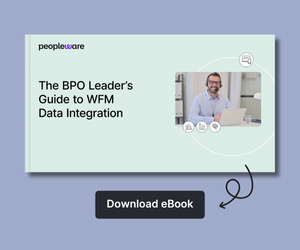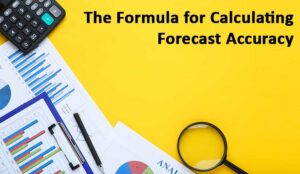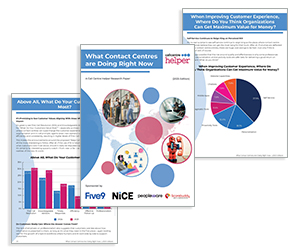Accurate forecasting is crucial in contact centres to meet customer demand effectively.
To find out what contact centre leaders can do to improve the accuracy of their forecast we asked Chris Dealy, WFM Evangelist at Peopleware (formerly injixo), for his advice.
Video: How to Improve Forecast Accuracy
Watch the video below to hear Chris outline how contact centres can improve forecast accuracy:
Thanks to Chris Dealy, WFM Evangelist at Peopleware (formerly injixo), for contributing to this video.
Four Tips for Improving Forecast Accuracy
1. Focus on the Right Metric
When forecasting, use the number of offered contacts, not just handled contacts. This ensures you account for all customer attempts, including abandoned interactions, to get a complete picture of demand.
“So the first one is to make sure that you basically focus on the right metric, and the trick there is to use the number of offered contacts, not the handled contacts.
Because what you want to forecast is the number of intended contacts that you receive, whether they’re chats, or calls, or whatever.
If you just use those that you handle, you’re excluding the abandons, which isn’t really what you want. You want to be looking at the contacts that customers attempted to make.”
2. Choose the Right Forecast Method
Experiment with different forecasting techniques to find the one that best suits your data and channels.
“Second tip is to choose a forecasting method that works best with your data, in your contact centre.
Now bit of a plug for Call Centre Helper here – there’s a brilliant article written by somebody called Jonty Pearce, you may have heard him, called the latest techniques for call centre forecasting.
It’s a brilliant overview of the different algorithms there, and the tip is to experiment with each of those to find which one works best, with each queue, for each channel, in your contact centre.
And also bear in mind that might change over time, so you need to revisit that regularly. Now again a modern AI-based, you know machine learning, forecasting engine will do that for you.
Always search for the best algorithm, and the best model of that algorithm, but it’s definitely something you should think about, don’t use the same technique every time.”
Regularly review and adjust your methods, as what works well now may not remain effective in the future. Modern AI-based tools can automate this process and refine accuracy over time.
3. Learn From Past Experience
Analyse discrepancies between forecasts and actual volumes.
“The third tip is to use what you learned when you were measuring forecast accuracy each time you do a forecast.
So you’ve got to be removing anomalies, so when we compared forecast and actual, you know can you find the explanation of why that went wrong.
Was it because there was an event, or an outage, or something like that, and then you can remove those things, or plan for those things next time around.
And that’s about adding what they call business intelligence, so if you know that there’s a marketing campaign, that’s what threw you off last time, next time that marketing campaign is run build that into your forecast, as a kind of exception, or an event as it’s called in injixo.
It could be anything like marketing campaigns, price changes, product launches, that kind of thing.”
Identify anomalies, such as marketing campaigns or outages, and incorporate them into future forecasts. Adding this business intelligence ensures better preparedness for similar events.
4. Commit to Continuous Improvement
Forecasting is an ongoing process. Continuously measure accuracy, investigate root causes of errors, and implement improvements with each forecast cycle.
“And the final tip is it’s a never-ending story improving forecast accuracy. You should be looking to continuously improve, and measuring each time, which we talked about earlier, and find the root causes and aim to get better each time around.”
If you are looking for more great insights from the experts, check out these next:
- Agent Statements for Supporting Bereaved Customers
- Simple Ways to Speed Up After-Call Work
- How to Improve Your Net Promoter Score (NPS)
- Top Tips to Optimize Occupancy and Utilization
Author: Robyn Coppell
Reviewed by: Hannah Swankie
Published On: 5th Mar 2024 - Last modified: 25th Sep 2025
Read more about - Video, Chris Dealy, Editor's Picks, Forecasting, Peopleware, Top Story, Videos
















